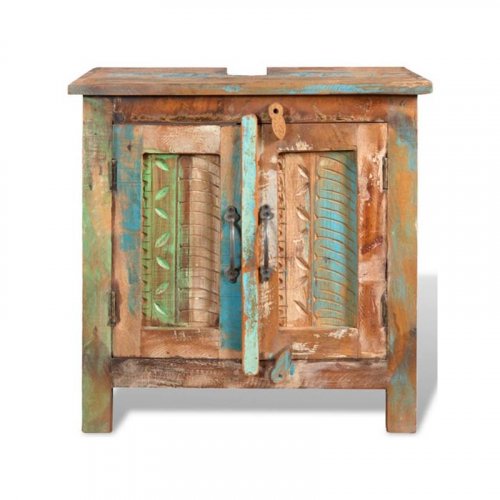What Kind of Wood Should You Choose?

Similar to fabrics or stone, wood is a very popular material for interior design. When we start thinking about which kind of wood to choose for our home, the huge variety that exists each of their characteristics can present a lot of questions.

You need to know where each kind of wood comes from because their origins determine characteristics like color, texture, and price.
What do you have to look for when you’re browsing? You have to analyze texture and color in order to choose the right one for your home. These two characteristics will determine the type of sensations that your home transmits.
Types of wood
Here are some examples of wood along with their characteristics and most common uses.
Don’t forget that each kind reacts differently outdoors; they all have different levels of resistance.

Choosing the right kind of wood: hardwoods
Hardwoods come from trees that grow very slowly. They are more resilient to meteorological changes.
They have a downside though: they’re not too plentiful, which makes them more expensive. Hardwood trees are deciduous, which means that they lose their leaves every Autumn.
- Mahogany: mahogany boasts excellent quality and an intense color. Additionally, it’s impermeable.
Treating wood specifically to prevent humidity absorption is extremely important.
- Cherry: cherry went from being a not so common material to a popular one, especially for furniture. Cherry darkens with too much sun exposure.
- Chestnut: the lumber from chestnut trees usually last for years on end. Floors that use chestnut don’t need to be changed; they just need some sanding and varnish every once in a while to stay in good condition. They create a warmer atmosphere.
- Ash: ash is a great option if you’re looking for floors that turn heads. It’s also a great material for furniture pieces that you’ll use frequently because it’s a strong wood.
- Walnut: walnut is a very traditional, classic wood. To keep your rooms looking too old, make sure you use walnut in a modern way.
- Oak: In Spain, oak is the most popular type of wood. Color-wise, it’s neither too light nor dark. As for its visual impact, it gives rooms a sense of solidness or stability. As a result, many people use it for beams.
Choosing the right kind of wood: softwoods
Softwoods grow much quicker, which is generally what makes them less expensive
However, a downside of softwoods is that their natural finish isn’t that visually appealing so you have to paint and varnish them.
Softwood comes from evergreen trees, which are trees that don’t lose their leaves in autumn. On the contrary, their leaves grow all-year-round.
- Pine: pine has a great quality/price ratio. Currently, pine is one of the most popular choices partly because it goes well in all sorts of rooms thanks to its neutral color.

- Maple: Of all the options, maple is the lightest. As a result, it’s often used in places that need light or when we don’t want to draw too much attention to our floors.
- White Birch: birch can be found in forests all throughout Europe. It’s a very economical material because the trees are abundant.
This type of wood is quite hard and strong, but it doesn’t withstand humidity very well. Consequently, it’s not very good for exteriors unless you apply a specific treatment.
- Poplar: poplar is very common and used for cheaper furniture pieces. It’s both resilient and light.
Keep in mind that a higher price tag doesn’t mean that the product will look better or worse; the rest of the room and your personal preferences are what really matters.
Recycled wood
The world of interior design has changed a lot in the past years. Currently, recycled woods are very trendy.
Today, you can find organizations that are decided to designing furniture and floors with recycled wood. When we’re deciding which kind of wood to choose, recycled is an option that’s getting more and more popular each day, even among important designers.

As you’ve read today, there are many kinds of wood and factors that can affect them. If you’re thinking about which one is right for your home, you can always ask for help from a specialist.
Don’t forget that a setting can affect us psychologically – the materials in a room can help create a comfortable space.
The home should be the treasure chest of living
– Le Corbusier –
Similar to fabrics or stone, wood is a very popular material for interior design. When we start thinking about which kind of wood to choose for our home, the huge variety that exists each of their characteristics can present a lot of questions.

You need to know where each kind of wood comes from because their origins determine characteristics like color, texture, and price.
What do you have to look for when you’re browsing? You have to analyze texture and color in order to choose the right one for your home. These two characteristics will determine the type of sensations that your home transmits.
Types of wood
Here are some examples of wood along with their characteristics and most common uses.
Don’t forget that each kind reacts differently outdoors; they all have different levels of resistance.

Choosing the right kind of wood: hardwoods
Hardwoods come from trees that grow very slowly. They are more resilient to meteorological changes.
They have a downside though: they’re not too plentiful, which makes them more expensive. Hardwood trees are deciduous, which means that they lose their leaves every Autumn.
- Mahogany: mahogany boasts excellent quality and an intense color. Additionally, it’s impermeable.
Treating wood specifically to prevent humidity absorption is extremely important.
- Cherry: cherry went from being a not so common material to a popular one, especially for furniture. Cherry darkens with too much sun exposure.
- Chestnut: the lumber from chestnut trees usually last for years on end. Floors that use chestnut don’t need to be changed; they just need some sanding and varnish every once in a while to stay in good condition. They create a warmer atmosphere.
- Ash: ash is a great option if you’re looking for floors that turn heads. It’s also a great material for furniture pieces that you’ll use frequently because it’s a strong wood.
- Walnut: walnut is a very traditional, classic wood. To keep your rooms looking too old, make sure you use walnut in a modern way.
- Oak: In Spain, oak is the most popular type of wood. Color-wise, it’s neither too light nor dark. As for its visual impact, it gives rooms a sense of solidness or stability. As a result, many people use it for beams.
Choosing the right kind of wood: softwoods
Softwoods grow much quicker, which is generally what makes them less expensive
However, a downside of softwoods is that their natural finish isn’t that visually appealing so you have to paint and varnish them.
Softwood comes from evergreen trees, which are trees that don’t lose their leaves in autumn. On the contrary, their leaves grow all-year-round.
- Pine: pine has a great quality/price ratio. Currently, pine is one of the most popular choices partly because it goes well in all sorts of rooms thanks to its neutral color.

- Maple: Of all the options, maple is the lightest. As a result, it’s often used in places that need light or when we don’t want to draw too much attention to our floors.
- White Birch: birch can be found in forests all throughout Europe. It’s a very economical material because the trees are abundant.
This type of wood is quite hard and strong, but it doesn’t withstand humidity very well. Consequently, it’s not very good for exteriors unless you apply a specific treatment.
- Poplar: poplar is very common and used for cheaper furniture pieces. It’s both resilient and light.
Keep in mind that a higher price tag doesn’t mean that the product will look better or worse; the rest of the room and your personal preferences are what really matters.
Recycled wood
The world of interior design has changed a lot in the past years. Currently, recycled woods are very trendy.
Today, you can find organizations that are decided to designing furniture and floors with recycled wood. When we’re deciding which kind of wood to choose, recycled is an option that’s getting more and more popular each day, even among important designers.

As you’ve read today, there are many kinds of wood and factors that can affect them. If you’re thinking about which one is right for your home, you can always ask for help from a specialist.
Don’t forget that a setting can affect us psychologically – the materials in a room can help create a comfortable space.
The home should be the treasure chest of living
– Le Corbusier –







